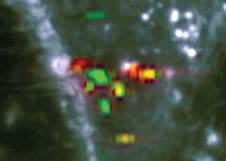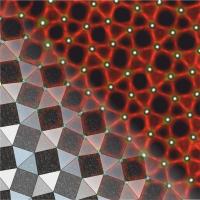Science
Raman pixel by pixel

- Read more
- 405 reads
Material in dissolvable sutures could treat brain infections, reducing hospital stays

The challenge of delivering to the brain a continuous regimen of antibiotics in case of infection could be met with plastic nanofibers that release medication directly to the affected site.
- Read more
- 392 reads
Perseid meteors to light up summer skies

A Perseid meteor (at left) seen in August 2010 above the four enclosures of the European Southern Observatory’s Very Large Telescope at Paranal, Chile.
- Read more
- 394 reads
New Study Finds that the Price of Wind Energy in the United States Is Near an All-Time Low

- Read more
- 376 reads
Better Than A Diamond?

Schematic of thermal management in electronics: Local temperature increases occur as a result of current flow in active regions of devices and can lead to degradation of device performance. Materials with high thermal conductivities are used in heat spreading and sinking to conduct heat from the hot regions.
- Read more
- 331 reads
Pass the salt: Common condiment could enable new high-tech industry

- Read more
- 405 reads
Molecules form 2-D patterns never before observed: Nanoscience experiments produce elusive 5-vertex tilings

The 2-D tessellation pattern known as the "semiregular snub square tiling" stands out clearly in this image, which combines scanning tunneling microscopy with computer graphics. The pattern, observed in a surface architecture just one molecule thick, was formed by self-assembly of linear organic linkers, imaged as rods, and lanthanide cerium centers, visualized as bright protrusions. The area shown measures less than 25 nanometers across.
- Read more
- 406 reads
Human Rights
Fostering a More Humane World: The 28th Eurasian Economic Summi

Conscience, Hope, and Action: Keys to Global Peace and Sustainability

Ringing FOWPAL’s Peace Bell for the World:Nobel Peace Prize Laureates’ Visions and Actions

Protecting the World’s Cultural Diversity for a Sustainable Future

Puppet Show I International Friendship Day 2020




